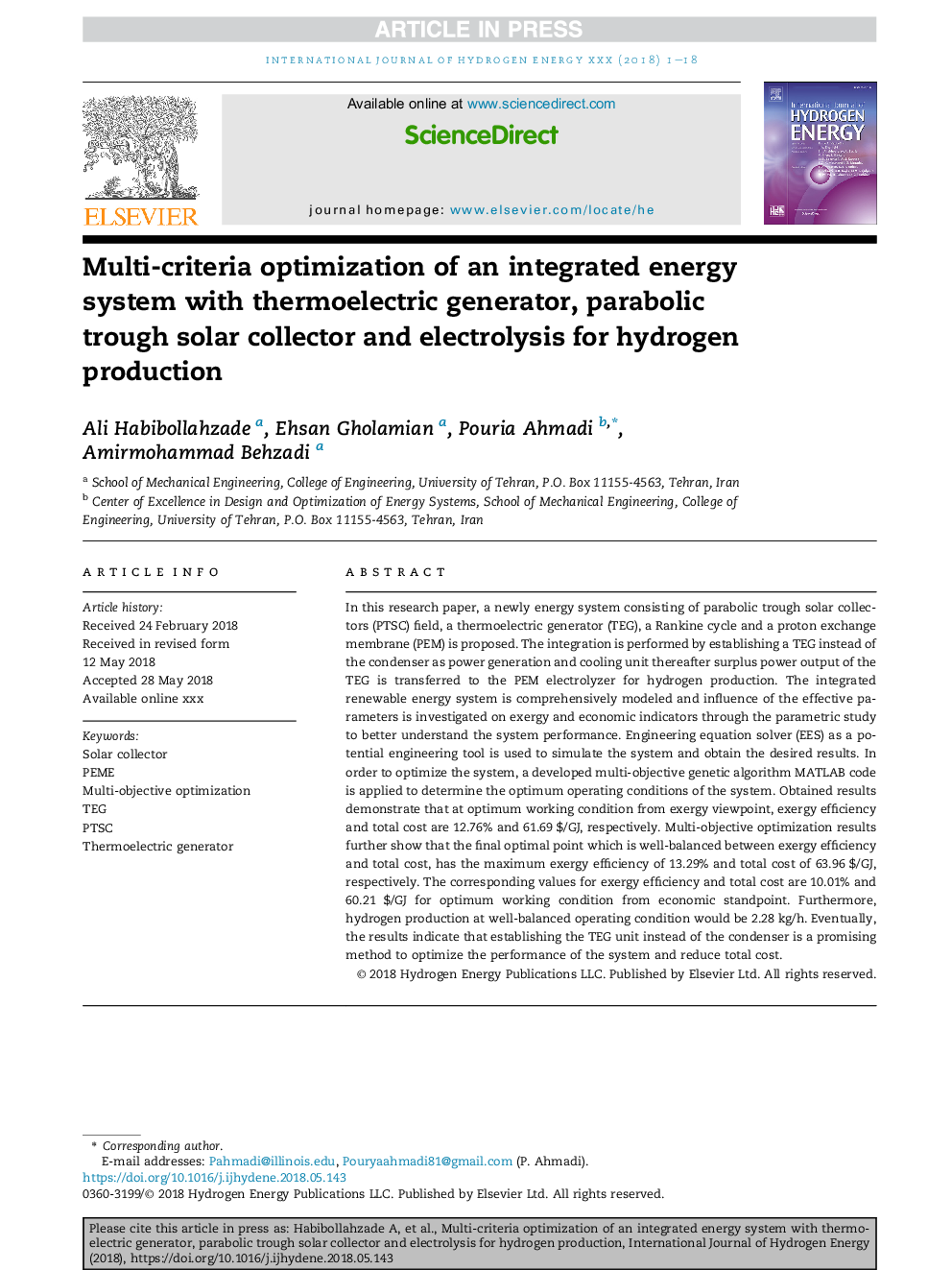| Article ID | Journal | Published Year | Pages | File Type |
|---|---|---|---|---|
| 7705271 | International Journal of Hydrogen Energy | 2018 | 18 Pages |
Abstract
In this research paper, a newly energy system consisting of parabolic trough solar collectors (PTSC) field, a thermoelectric generator (TEG), a Rankine cycle and a proton exchange membrane (PEM) is proposed. The integration is performed by establishing a TEG instead of the condenser as power generation and cooling unit thereafter surplus power output of the TEG is transferred to the PEM electrolyzer for hydrogen production. The integrated renewable energy system is comprehensively modeled and influence of the effective parameters is investigated on exergy and economic indicators through the parametric study to better understand the system performance. Engineering equation solver (EES) as a potential engineering tool is used to simulate the system and obtain the desired results. In order to optimize the system, a developed multi-objective genetic algorithm MATLAB code is applied to determine the optimum operating conditions of the system. Obtained results demonstrate that at optimum working condition from exergy viewpoint, exergy efficiency and total cost are 12.76% and 61.69 $/GJ, respectively. Multi-objective optimization results further show that the final optimal point which is well-balanced between exergy efficiency and total cost, has the maximum exergy efficiency of 13.29% and total cost of 63.96 $/GJ, respectively. The corresponding values for exergy efficiency and total cost are 10.01% and 60.21 $/GJ for optimum working condition from economic standpoint. Furthermore, hydrogen production at well-balanced operating condition would be 2.28Â kg/h. Eventually, the results indicate that establishing the TEG unit instead of the condenser is a promising method to optimize the performance of the system and reduce total cost.
Related Topics
Physical Sciences and Engineering
Chemistry
Electrochemistry
Authors
Ali Habibollahzade, Ehsan Gholamian, Pouria Ahmadi, Amirmohammad Behzadi,
